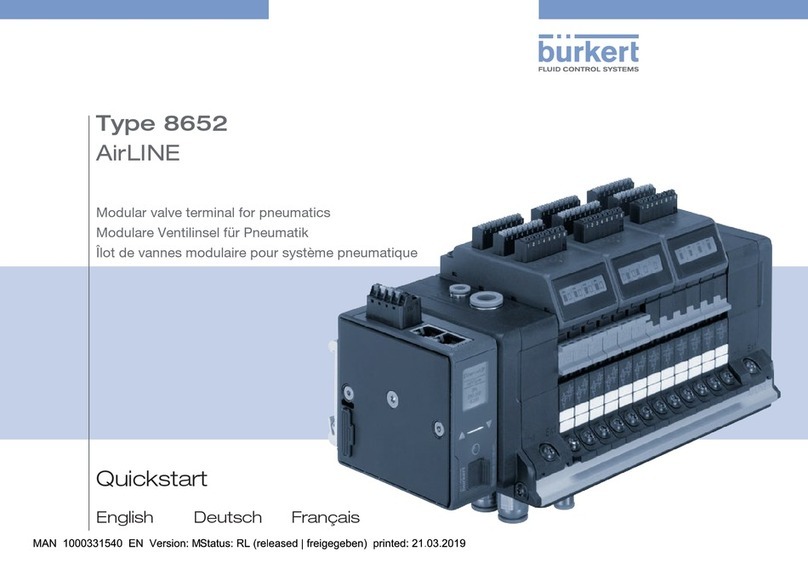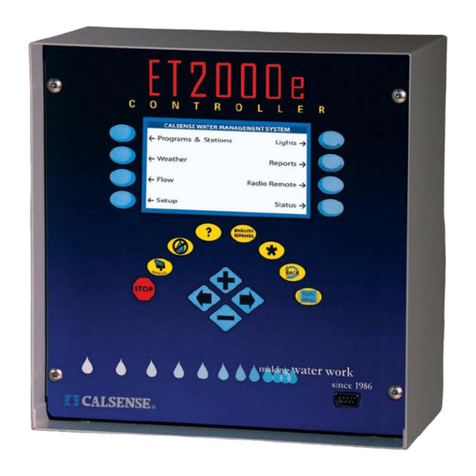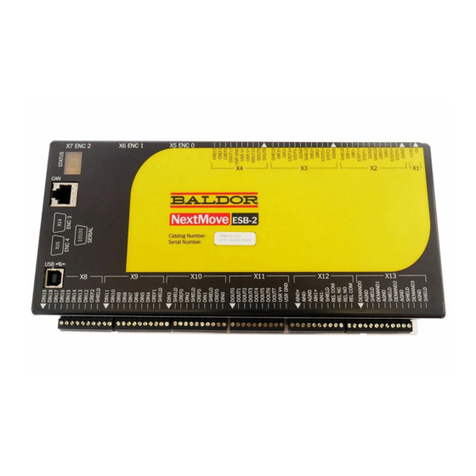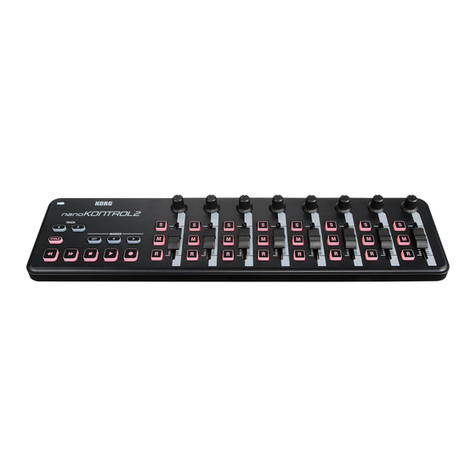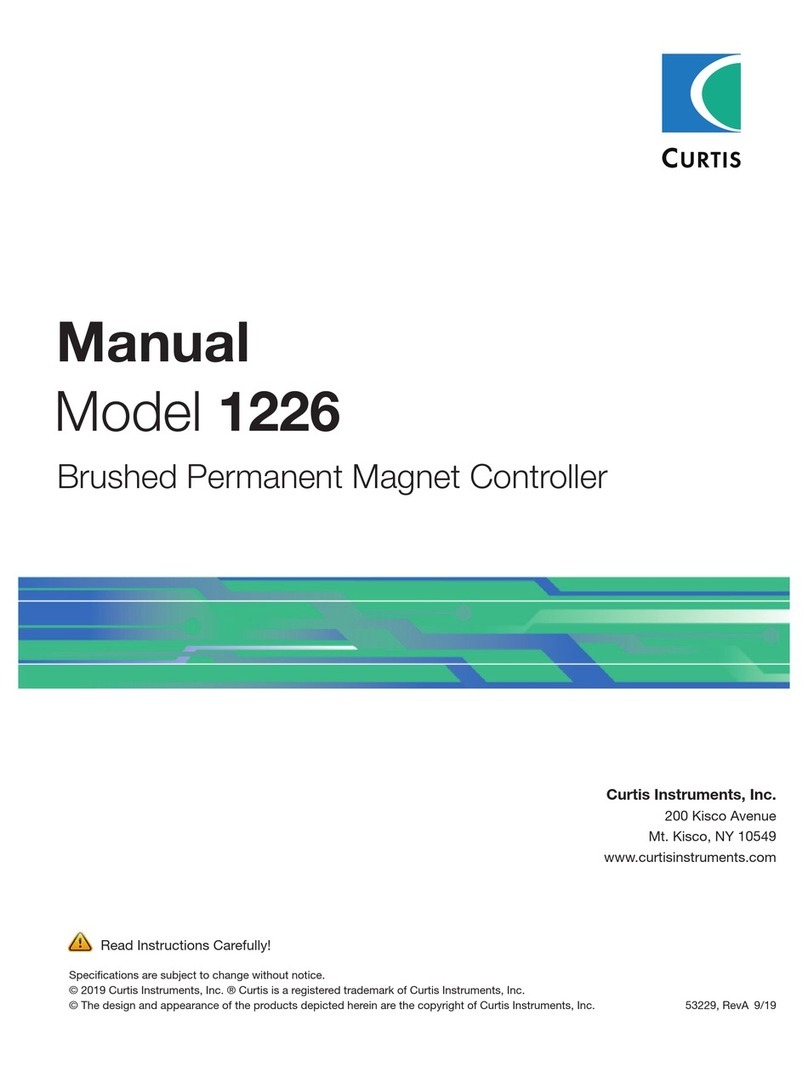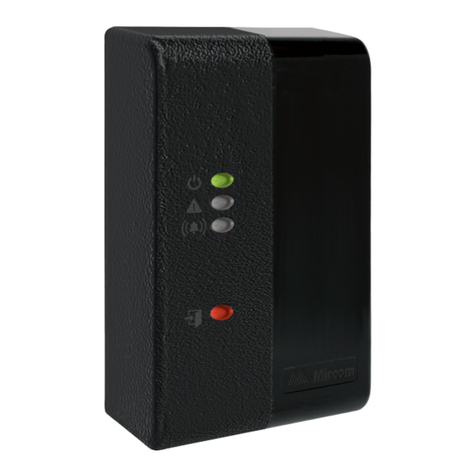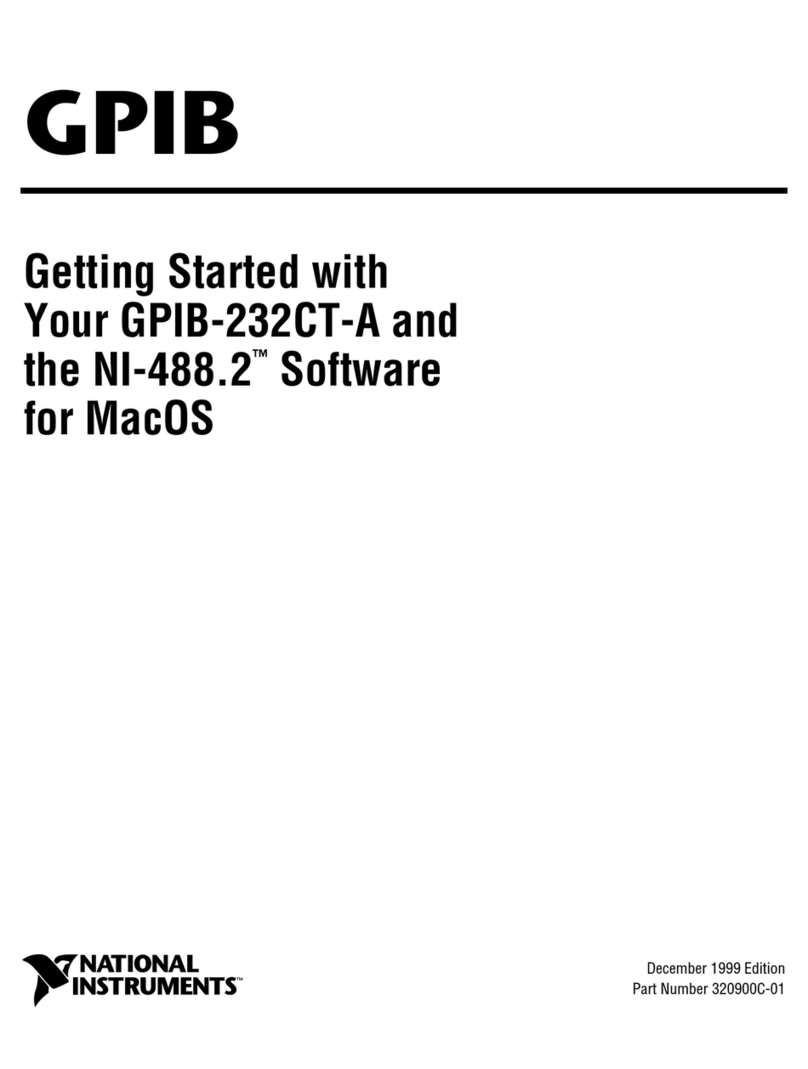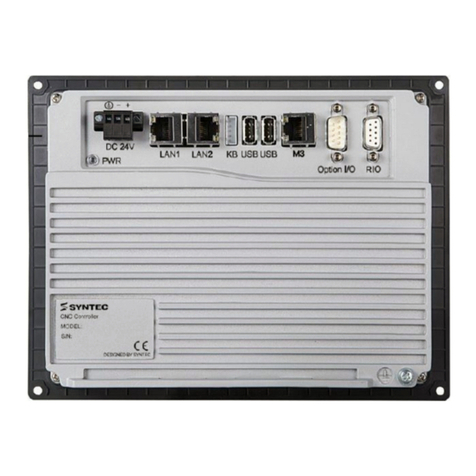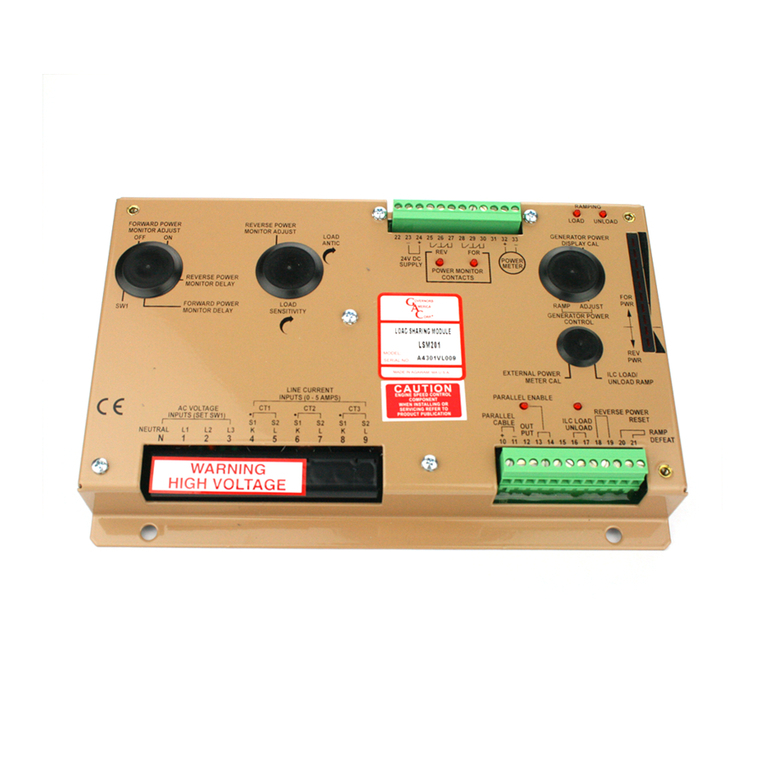NORME LDSCDIND PLUS User manual

1
OPERATING INSTRUCTIONS FOR
“LDSCD PLUS” / “LDSCDIND PLUS” / “LDSCDIND PLUS D”
INSTRUMENT SERIES
This manual contains safety information that if ignored can
endanger life or result in serious injury. They are indicated
by this icon.
Keep the instrument protected from sun and water.
Avoid water splashes.
Read Carefully ! ENGLISH Version
R14-12-18
DOWNLOAD ERMES COMMUNICATION SOFTWARE
www.ermes-server.com

2
Danger!
GENERAL SAFETY GUIDELINES
In emergencies the instrument should be switched off immediately! Disconnect the power cable
from the power supply!
When installing always observe local regulations!
Manufacturer is not liable for any unauthorized use or misuse of this product that may cause injury,
damage to persons and / or materials.
Caution! Instrument must be accessible at all times for both operating and servicing. Access must not be
obstructed in any way!
Feeder should be interlocked with a no-flow protection device to automatically shut-off the pumps
when there is no flow!
Pumps and accessories must be serviced and repaired by qualified and authorized personnel only!
Always discharge the liquid end before servicing the instrument!
Empty and rinse the liquid end before work on a pump which has been used with hazardous or
unknown chemicals!
Always read chemical safety datasheet!
Always wear protective clothing when handling hazardous or unknown chemicals!
Instrument must be operated / serviced by trained technicians only!
All connection operations must be performed while the instrument is not connected to main
supply!
Missed activation for Min/Max alarm and Maximum Dosing Alarm may cause hazardous overdosing!
NORME CE
EC RULES(STANDARD EC)
NORMAS DE LA CE
Direttiva Bassa Tensione
Low Voltage Directive
Directiva de baja tensión
Direttiva EMC Compatibilità Elettromagnetica
EMC electromagnetic compatibility directive
EMC directiva de compatibilidad electromagnética
2014/35/UE
2014/30/UE
⎬
⎬

3
1. Introduction
LDSCD is a microprocessor based digital regulator for conductivity with temperature reading and mA module (feed
forward). On/Off, impulsive proportional, proportional PWM or fixed PWM, Water Meter and PID are main working
modes.Also available FEED FORWARD setting for mA module. Pulses per minute can be set for outputs.Working ranges
are: Conductivity: from 0 to 10 mg/l. All information are provided through a large LCD display. Using a revolutionary
wheel control the instrument can be easily programmed. LDSCD is housed in a IP65 plastic box.
For LDSCD PLUS D version refers to page 31.
INPUTS:
- Stand-by
- Flow
- Conductivity level
- Conductivity probe
- Temperature probe
- Water Meter
2. The wheel
Located in the upper right side of LDSCD there is a wheel that must be used to control the instrument. Wheel can
be rotated in both directions to scroll over the menus and / or pressed to confirm highlighted selection / value.
NOTE: Once changes are made press “OK” to save and exit from submenu. Press “ESC” to exit without saving.
Rotate wheel to scroll through menus or options
Press wheel to select highlighted option
OUTPUTS:
- 2 relay outputs (CD and alarm)
- 2 opto coupled pulses outputs (CD and temperature)
- 2 current outputs (CD and Temperature)
- Main alarm
SCROLL

4
3. Mainboard Connections
Unplug instrument from main power supply then perform connections by following the above picture.
A: Main Fuse (6A T)
B: Instrument Fuse (3.15A T)
C - D - E : Factory reserved +5V
L(Live) - E(Earth) - N(Neutral): 85÷264VAC* or 18÷36VAC* 50/60 Hz *see instrument’s label
1(Live) - E(Earth) - N(Neutral): 85÷264VAC - 5A 50/60 Hz Relay Output “CD Relay 2”. To use with ON/OFF or PWM device
2(Live) - E(Earth) - N(Neutral): 85÷264VAC - 5A 50/60 Hz Relay Output “CD Relay”. To use with ON/OFF or PWM device
3(Live) - E(Earth) - N(Neutral): 85÷264VAC alarm output (MAX 5A)
4(Live) - E(Earth) - N(Neutral): 85÷264VAC “SELF CLEAN” output (MAX 5A)
5(Live) - E(Earth) - N(Neutral): 85÷264VAC “CIRCULATOR PUMP” output (MAX 5A)
6(Green) - 7(Brown) - 8(White) - 9(Yellow): PT100 temperature probe (remove jumper / resistor prior to install probe)
11(-) - 10(+): Standby contact* *for LDSCIND-C version contact is “N.C.” Normally Closed
11(-) - 12(+): CD Level 1 contact
19(-) - 18(+): CD Level 2 contact
14(+ Brown) - 15(Black) - 16(- Blue) - 17(GND): Proximity sensor mod. “SEPR” (dont’ remove jumper between blocks 16 and 17)
21(GND) - 28(+RS485) - 29(-RS485): RS485
24(-) - 25(+): Opto coupled output “CD PULSE”. To use with “IS” , “MF” , “PLUS” series dosing pumps
26(-) - 27(+): Opto coupled output “CD PULSE 2”. To use with “IS” , “MF” , “PLUS” series dosing pumps
31(-) - 32(+): mA Current Output CD
34(-) - 35(+): mA Current Output Temperature
31(-) - 30(+): mA Current Output PID
36(+) ; 37(-): WM Input (max input frequency 500Hz)
L 1 2 3 4 5
E E E E E E
N N N N N N
6 7 8 9 10 11 12 13
14 15 16 17 18 19 20 21
22 23 24 25 26 27 28 29
A
B
MAIN
BOARD
DISPLATY BOARD
30 31 32 33 34 35 36 37
Warning: Connections must be perfomed by qualified and trained personnel only.
⎬Max resistive load: 500 Ohm
C D E
USB or GSM or ETHERNET modules
(see this manual “Appendix”)
Probes and mA
modules connectors
(see this manual “Appendix”)
(no MODBUS)

5
4. Main Screen
When into normal operating mode, LDSCD shows the following main screen:
UNIT (1)
VALUES (2)
OUTPUTS STATUS (3)
Main screen zones:
(1) UNIT Values read by the probe. “mS” - “uS” - “PPM/TDS”* are the measuring unit
for Conductivity probe. To change unit refer to “International” menu.
(2) VALUES These numbers are values read by the probes.
According to selected probe, this field may appear different.
(3) OUTPUTS STATUS These fields are related to current outputs status and instrument activity.
For more information rotate the wheel when into main screen. (see next page)
During critical situations a warning / alarm message may appear. To
in-depth explanation completely rotate clockwise the wheel to review main
instrument parameters and current outputs status.
*sold as option
*PPM / TDS unit is based on 1mS = 640 PPM of TDS (total dissolved solids)
Note: the word “PUMP” as shown into this manual refers to a “dosing device” connected to the instrument!
WARNING MESSAGES
NOTIFICATION AREA
WARNING MESSAGE
NOTIFICATION AREA
LAN CONNECTION OK - ERMES CONNECTION OK
LAN CABLE DISCONNECTED
LAN CABLE CONNECTED - ERMES NOT AVAILABLE
Connection Status
CONNECTED TO USB PEN-DRIVE
ERMES OK
GSM Signal*

6
5. Quick status check
From main screen completely rotate clockwise the wheel to review main instrument parameters and current outputs
status.
Local Time
Local Date
Conductivity probe reading
Temperature probe reading
Dosing alarm condition
Probe failure status
Alarm contact status
Flow contact status
Tank Level status
Last Conductivity calibration
result
Last Conductivity calibration date
Last Temp. calibration result
Last Temp. calibration date
Outputs Status
See mainboard (page 4) for related
connetions.
:::

7
6. Password
To grant access into “Main Menu” press the wheel from main screen and enter the passcode.
If this is the first time here then the passcode is 0000 (factory preset). Press wheel 5 times to enter into “Main
Menu”. Otherwise press the wheel 1 time and enter the passcode. Numbers can be selected rotating the wheel.
To set a new passcode choose “PARAMETERS” from “Main Menu” , move on “New Pcode”, click on wheel and
enter a four numbers code. Click on “EXIT” and choose “YES” to save request. The new passcode is now ready.
Lost passcode ?
Please dont’ forget the passcode (if changed). In the unfortunate event, please call your local distributor for unlocking procedure. There is no way for you
to recover lost passcode.
X5

8
7. “Main Menu” list
To grant access into “Main Menu” enter the passcode (as described in previous chapter). Once into “Main Menu”
rotate the wheel to scroll through all the options available.
“Setpoint” (see page 9)
“Calibration” (see page 14)
“Parameters” (see page 16)
“Output manager” (see page 17)
“Instrument reset” (see page 18)
“Dosing alarm” (see page 19)
“International” (see page 20)
“Probe Failure” (see page 21)
“Compensation” (see page 42)
“Flow” (see page 22)
“Service” (see page 22)
“Out of Range Alarm” (see page 24)
“mA Outputs” (see page 23)
Communication (see below)
“Log Setup” (see page 38)
“Log View” (see page 38)
“Self Clean” (see page 25)
“Circulator Pump” (see page 26)
“Water Meter” (see page 29)
“Feed Forward ” (see page 30)
“RS485 Setup” (see page 35)
“SMS menu” (see page 35)
“TCP IP” (see page 36)
“GPRS” (see page 37)
“Email” (see page 37)
“Modbus” - (see page 39)

9
8.1 “Set-Point”
“CD PULSE 1 ” and “CD PULSE 2” outputs can be set to operate within:
On/Off, Proportional (%) or disabled (OFF) modes.
“CD RELAY 1” and “CD RELAY 2” outputs can be set to operate within:
On/Off, Proportional PWM, Fixed PWM or disabled (OFF) modes.
8.2 “Set-Point”, Conductivity (on/off)
All Conductivity outputs can be set to operate into this mode.
This mode enables Conductivity pump to operate between two On/Off values. Move wheel over “Working
Mode” to select it.
ON/OFF mode
Set Conductivity value at 1,50mS ON and 2,00mS OFF. The difference between the two Conductivity values is called
HYSTERESIS.
Instrument will enable the Conductivity pump when reading value will decrease at 1,50mS
At 1,50mS the Conductivity pump will be enabled until reading value will increase at 2,00mS.
Pulse Speed: pulses per minute setting.
1,50 2,00
ON
OFF

10
8.2 “Set-Point”, CD proportional & proportional water meter (pulse)
This mode is valid for “CD pulse” and “CD pulse 2” outputs only.
Proportional mode set the instrument to operate using a calculated percentage between two set values that
enable or disable the Conductivity pump. To use this mode move cursor on “Working Mode”. Press the wheel
and select it.
PROPORTIONAL MODE between 2,00(0 P/m) and 1,50(180 P/m). [P/m: pulses per minute]
This mode operates Conductivity pump for a value lower that 1,50mS with maximum dosing capacity (180strokes) and
it will stop Conductivity pump for a reading value higher than 2,00mS.
Proportional Water Meter
Proportional mode can also be set into PROP+WM mode. This option allows to regulate proportional input based on
flow detected by water meter at set percentual values.
e.g.: reading at 0.90 will have an output of 90 P/m (50%). Adding the proportional flow from the water meter with
parameters set between 20 % (at 0mc/h) and 100% (at 8mc/h) results will be that (as example):
At 4 mc/h will have a working period of 54 P/m (60% of 90P/m)
60% is the middle value between 20% and 100% for reading of 4mc/h

11
8.3 “PWM” proportional CD & proportional water meter (relay)
“CD RELAY 1” and “CD RELAY 2” outputs can be set into this mode.
Pulse-width modulation (PWM) of a signal or power source involves the modulation of its duty cycle, to either convey
information over a communications channel or control the amount of power sent to a load.
This mode works over a settable (0 to 100 seconds) time to switch on or off selected output.
Time resolution is 5 seconds, 5 steps. During this time if reading value will move towards a set value (on or off) the PWM
will operate the output on timered basis. Reaching the set value the PWM will permanently leave on or off the output.
Parameters to set are:
Unit Value + %: (time activity towards set value. 0% means 0 seconds. 100% means 100 seconds.)
mS range: two pH value between PWM operates.
E.g: set rst value at 2,00 = 00% and second value at 1,50=60%.
For reading values ≥ 2,00 output will always be OFF.
For reading values ≤ 1,50 output will be ON for 60 seconds and OFF for 40 seconds.
If reading value is 1,75 mS the ouput will be ON with a 30% of total set time. (ON for 30 seconds, OFF for 70 seconds).
Proportional Water Meter
Proportional mode can also be set into PROP+WM mode.
This option allows to regulate proportional input based on
flow detected by water meter at set percentual values.
e.g.: reading at 0.09 will have an output of 50 seconds
on and 50 seconds Off (50% on 100 seconds base).
Adding the proportional flow from the water meter with
parameters set between 20 % (at 0mc/h) and 100% (at
8mc/h) results will be that (as example):
At 4 mc/h will have a working period of 30 seconds ON
and 70 seconds OFF (60% of 90P/m)
60% is the middle value between 20% and 100% for
reading of 4mc/h

12
8.5 “PWM” (fixed), Conductivity
“CD RELAY 1” and “CD RELAY 2” outputs can be set into this mode.
Pulse-width modulation (PWM) of a signal or power source involves the modulation of its duty cycle, to either convey
information over a communications channel or control the amount of power sent to a load.
This mode works over a settable (0 to 100 seconds) time to switch on or off selected output.
Time resolution is 5 seconds, 5 steps. During this time if reading value will move towards a set value (on or off) the PWM
will operate the output on timered basis. Reaching the set value the PWM will permanently leave on or off the output.
Parameters to set are:
mS range: two mS value between PWM operates.
Ton: “ON” time if output is active.
Toff: “OFF” time if output is active.
E.g.: set rst mS value: (OFF) at 2,00 and second mS value: (ON) at 1,50.
Set “WORK-PAUSE” activity with Toff 0 seconds and Ton 80 seconds.
For reading values ≥ 2,00 output will always be OFF.
For reading values ≤ 1,50 output will be ON within “WORK-PAUSE” mode based on Ton and Toff settings.
Within 2,00mS and 1,50mS values output activity will operate on HYSTERESIS basis. Once 2,00mS reading value will be
reached the output will always be OFF up to 1,50mS reading value.

13
8.5 “PID”, CD
A proportional-integral-derivative controller (PID controller) is a control loop feedback mechanism (controller) widely
used in industrial control systems. A PID controller calculates an error value as the difference between a measured
process variable and a desired setpoint. The controller attempts to minimize the error by adjusting the process
through use of a manipulated variable. The PID controller algorithm involves three separate constant parameters,
and is accordingly sometimes called three-term control: the proportional, the integral and derivative values, denoted
P, I, and D. Simply put, these values can be interpreted in terms of time: P depends on the present error, I on the
accumulation of past errors, and D is a prediction of future errors, based on current rate of change.[1] The weighted
sum of these three actions is used to adjust the process via a control element such as the position of a control valve,
a damper, or the power supplied to a heating element.
To correctly setup PID as working mode configure the following parameters within two menus “SETPOINT MODE
PID” and “PID PARAMETERS”
1) Choose related output to work into PID mode using Setpoint menu
2) Enter RANGE value. Range is the maximum PID value over or under which (depending on CD + or CD-) the
instrument will automatically switch into proportional mode
3) Enter SETPOINT which is the optimal value to achieve. Move the cursor to OK and save the data.
4) Select “PID PARAMETERS” within SETPOINT submenu
- Choose working mode (+ or -) baed on how setpoint must be reached: starting from lower or higher values.
- Enter INTEGRATIVE value (time needed to the instrument to activate a procedure as answer to a plant’s change. E.G.: time
needed for pump activation when reached a set value. ) Default value: 60 seconds.
- Enter DERIVATIVE value ( time needed to the instrument to react to a plant’s status change. E.G.: if pH value in water
increase, the time integrative is the time needed to notify the change.) Default value: 3 seconds.
- Move curson on OK then click to save settings.

14
9.1 “Menu Calibration”, Probe CD
Conductivity calibration procedure involves a zero calibration (P1) and a 2nd calibration point (P2) that requires a
buffer solution with value near working range. Note: This procedure assumes that instrument is correctly installed
and congured, connected to a working probe. Calibrate using plant’s temperature otherwise unattended
results may occur. Verify probe selection into “MENU CALIBRATION”, “SELECT PROBE” pag. 15 before to start
calibration procedure.
P1 & P2
During this procedure probe must be dry and clean and not installed in plant. Move wheel on “P1” then press wheel,
move cursor on “OK” and press wheel again. Move wheel on “P2” then press wheel to enter into second point calibration
submenu. Prepare buffer solution and dip probe’s sensor on it. Wait until reading value is stable and according to buffer
solution value move wheel until it is the same on display (“uS default” eld). End procedure moving cursor on “OK”.

15
9.1 “Probe Calibration”, °C - Temperature
A professioanl thermometer is required to obtain a reliable calibration. From “Menu Calibration” choose “Temp probe”.
Note: This procedure assumes that instrument is correctly installed and congured, connected to a working
PT100.. Calibrate using plant’s temperature otherwise unattended results may occur.
Using an external thermometer read actual temperature and edit related eld “Cal. at”. Conrm by pressing wheel.
9.2 “Menu Calibration”, Scale Setup
Instrument can operate according to uS, mS or PPM reading values and scale range. Move cursor on “Probe” press and
rotate the wheel to change it within 3000uS --> 30.00mS --> 300.0mS or PPM (K1, K 0.1, K10).
Special x1000 scale version can be set choosing “SALINITY” as probe’s model name.
Note: these changes must be set according to probe reading capacity. See probe’s datasheet to choose correct values.

16
10. “Parameters”
From “Menu Calibration” choose “Parameters”. This menu allows to set a delay (max 60 minutes) before pumps begin
to feed. Furthermore use this menu to set pH pump startup priority and to change default passcode.
Feeding Delay.
Move on “Feeding Delay” then press wheel. Choose a value between 0 (disabled) and 60 minutes (maximum delay
time). This feature can be used to accord a startup delay for the pumps. Delay occurs when instrument is powered.
Mode.
Move on “Mode” then press wheel. If both pumps need to operate, a startup priority can be set to allow the pH pump to
begin to feed prior to Cl pump. Choose “pH priority” to enable this function. Cl pump will begin to dose when pH pump
has stopped.
Tau.
If probes reading values are changing too fast increase TAU value to stabilize them. Default value is 05. Maximum
value is 30.
New Pcode.
See page 10.
To end procedure move cursor on “OK” and press wheel to proceed to “Save” request screen. Move wheel on “YES” to
save or “NO” to discard changes.

17
11. “Output Manager”
From “Menu Calibration” choose “Output Manager”. This menu allows to manually operate all outputs for a
settable time. Set to “AUTO” for normal operating mode. Set to “OFF” to permanently disable outputs.
Press wheel to move cursor on “TIME” field. Once here, choose a working time between 0 (disabled) or 199
minutes. Move on “EXIT”, then press wheel.
Choose “YES” to save changes. Exit from main menu. Main display will show a countdown for selected output.
To stop this countdown go back to “Output Manager” menu and choose “AUTO” as working mode or wait until
countdown ends. This function can be used for priming purposes.

18
12. “Instrument Reset”
To restore instrument to its default values (including password) once into “Instrument Reset” menu, press wheel
then change value to “ON”, press wheel again, move on “OK” then finally press wheel. The instrument display
will show “CHECKSUM ERROR”. Press whell to return into “Main Menu”. Move on “EXIT”, then press wheel. The
instrument is now restored to factory default. Please repeat all calibration procedures and programming parameters.

19
13. “Dosing Alarm”
Use this menu to assign a maximum time to the pumps for reaching the setpoint. If set time ends and the pumps
are still dosing, within this menu is possible to STOP them or just to show an alarm message. Function can be
disabled selecting “OFF” instead of a number (minutes). Dosing alarm can be set for both or just one pump.
E.g. To set Conductivity pump to stop after time ends and setpoint isn’t still reached press wheel, choose maximum
time, press wheel move on next field and choose “STOP”. Time can be set between 0 and 100 minutes. When
satisfied with settings move on exit and press wheel.
To end procedure move cursor on “OK” and press wheel to proceed to “Save” request screen. Move wheel on “YES”
to save or “NO” to discard changes.

20
14. “International”
Use this menu to set international parameters as UNIT FORMAT (Europe IS or USA), Local Time and Date.
Format.
Use this option to use European or USA units format. See table for differencies.
EUROPE IS (Internationl Standard) USA
Date (DD/MMM/YY) Date (MMM/DD/YY)
Time 24h Time AM / PM
°C °F
Time.
Use this option to set local time.
Date.
Use this option to set date.
Move on exit to end changes.
To end procedure move cursor on “OK” and press wheel to proceed to “Save” request screen. Move wheel on
“YES” to save or “NO” to discard changes.
This manual suits for next models
3
Table of contents
Popular Controllers manuals by other brands
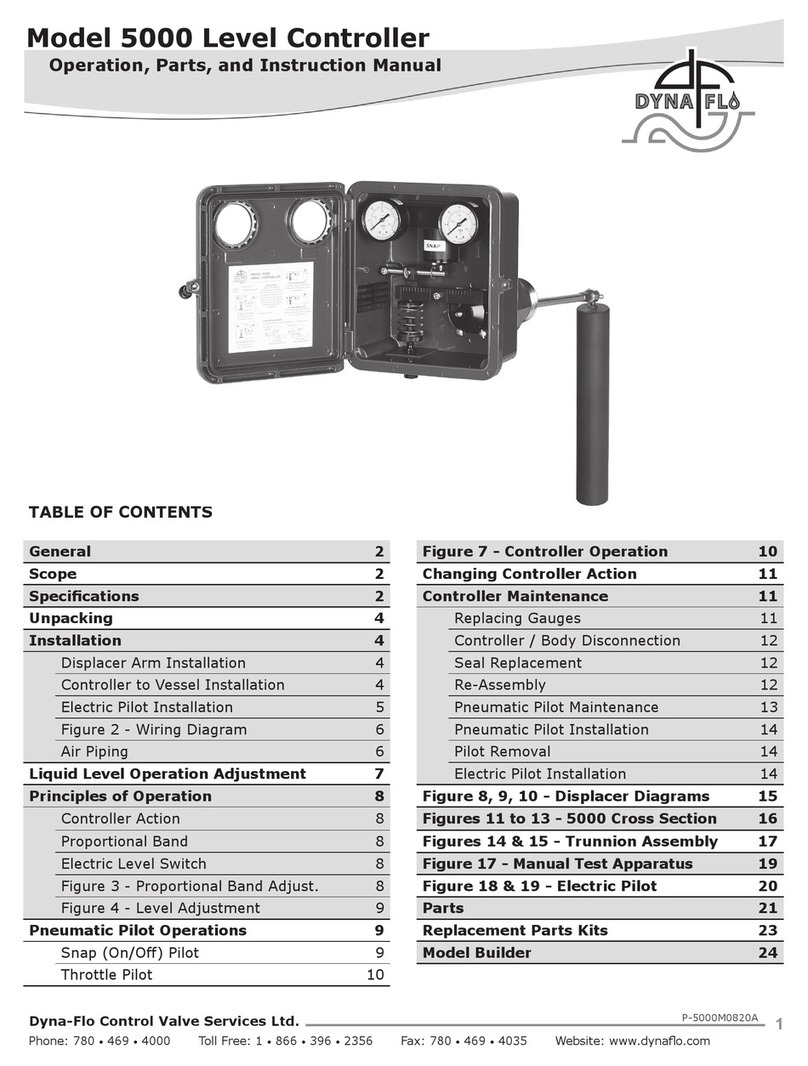
Dyna-Flo
Dyna-Flo 5000 Operation, Parts, and Instruction Manual
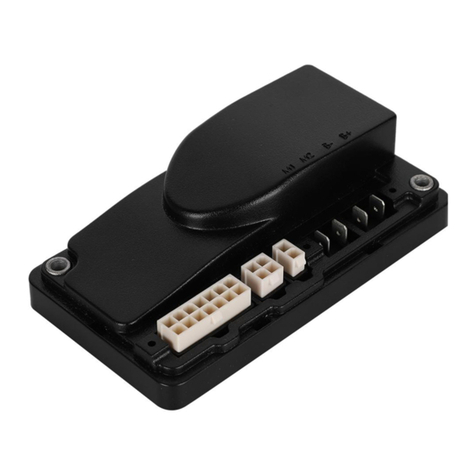
Curtis Instruments
Curtis Instruments 1212 manual
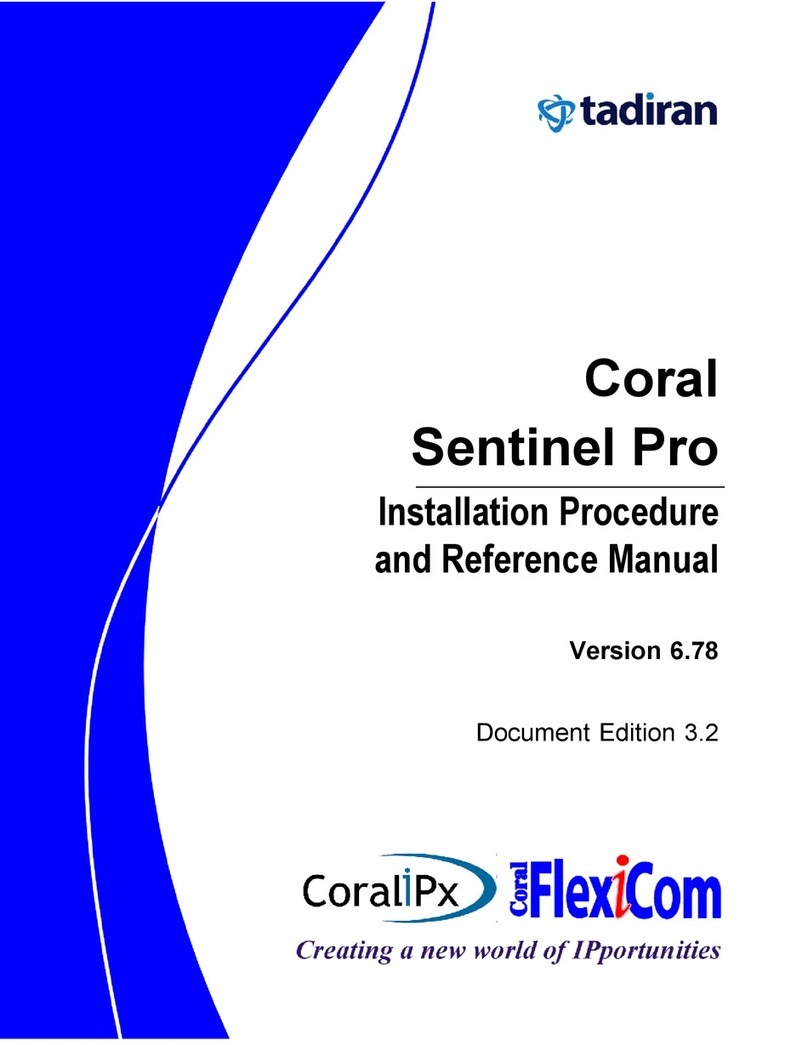
Tadiran Telecom
Tadiran Telecom Coral Sentinel Pro Installation Procedure and Reference Manual
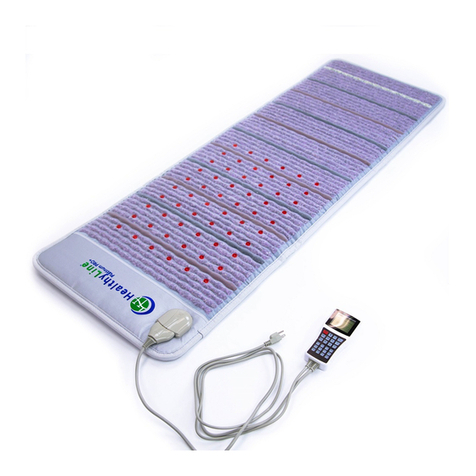
HealthyLine
HealthyLine PLATINUM Series instruction manual
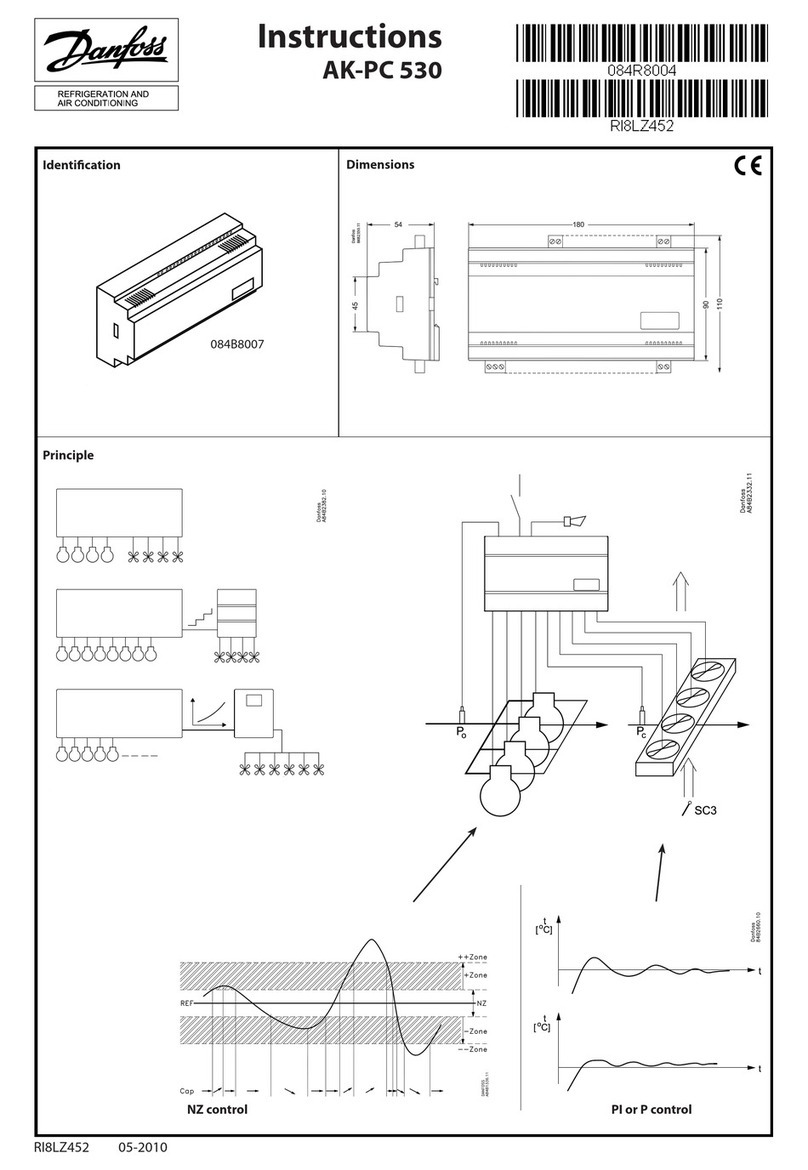
Danfoss
Danfoss AK-PC 530 instructions
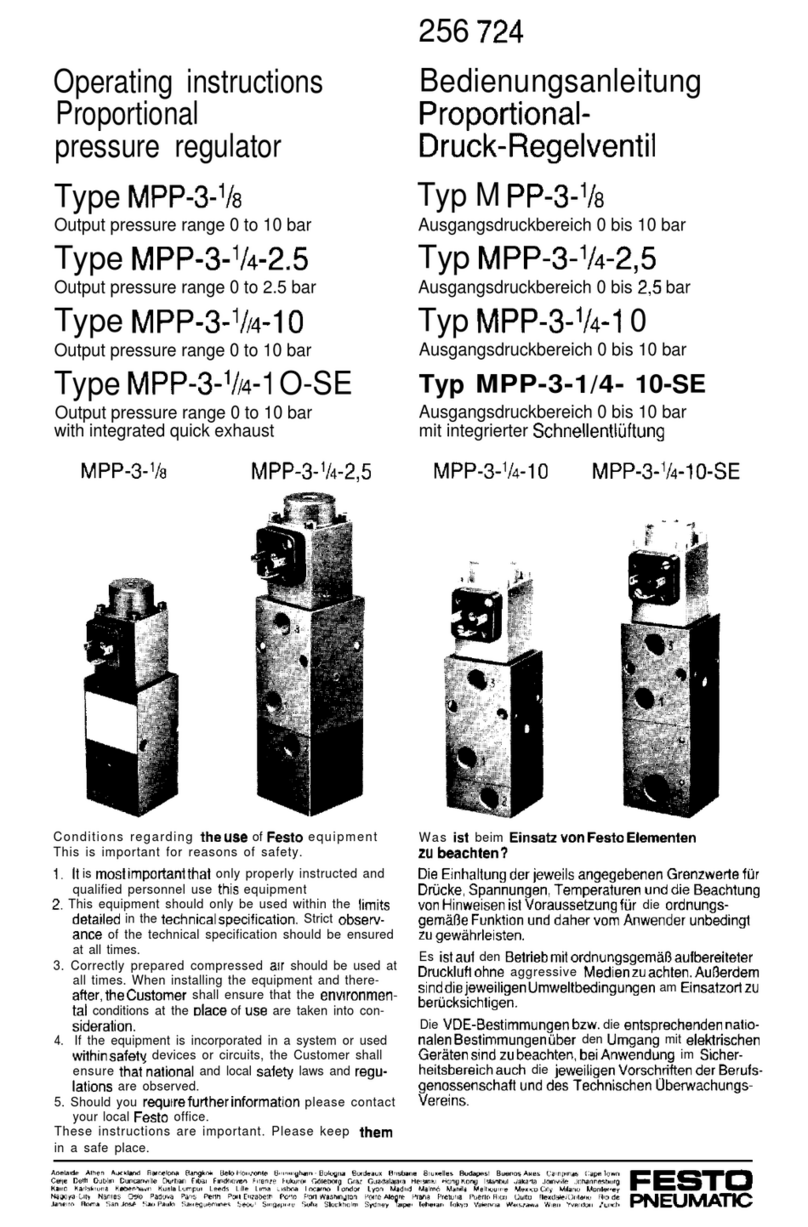
Festo
Festo MPP-3-1/8 operating instructions
